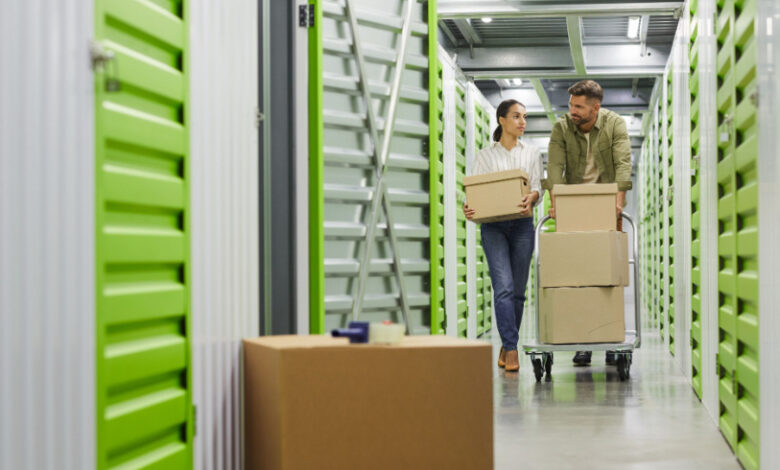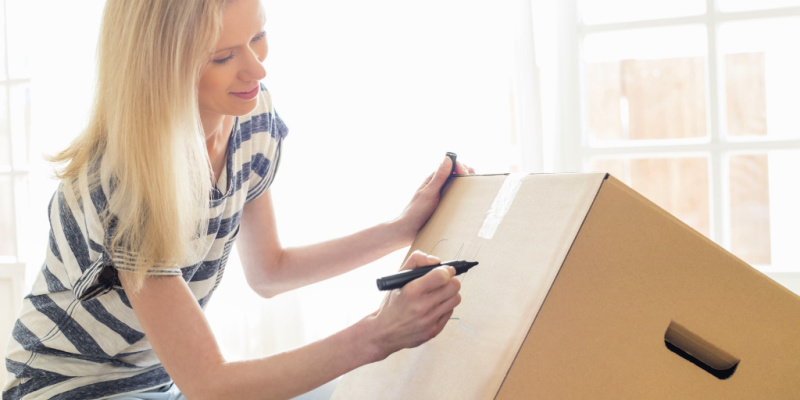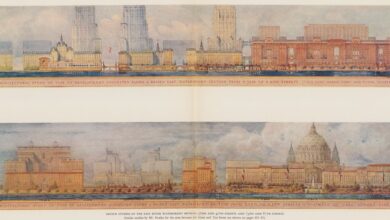Self Storage Unit Organization Tips

Self-storage is a popular service that helps people when they move, downsize, move in with extended family, and when they go to college. Plus, the service can help you run your business better and keep your home organized. In addition, self storage is a rather inexpensive service, but there are price differences depending on the location. Big cities with high demand tend to be more expensive than places with less publicity. For example, renting a storage unit in Los Angeles can cost up to $265/month. The same goes for San Francisco ($284/month), New York ($260/month), and Seattle ($210/month). Other cities, such as Oklahoma City ($81/month), Columbus ($99/month), or Austin ($126/month) offer lower rates.
Now that you know how much self-storage costs, getting your stuff into a storage unit should be a piece of cake, right? If you are renting a unit for the first time, you should know that there are some do’s and don’ts in this regard. Here are some tips to help you get the most out of your storage unit space:
1. Consider what you can’t put in a storage unit
The list of things you can put in a storage unit can be quite long, but a few items cannot be stored in a unit. For example, toxic and flammable substances, perishables, live plants and animals generally cannot be kept in a storage unit. Always check with your storage facility for a full list of things that are not allowed in storage.
2. Take inventory of stored items
When preparing to store your belongings, start by making a list of everything you plan to keep in your home. Do an analog inventory that you can keep inside the device, and it’s a good idea to also have a digital copy in case the first one gets lost. Use it to mark items going in and out of the unit so you can easily track your activities and know what you have inside a storage unit at all times.
3. Label everything
Label bins and boxes before bringing them to your storage unit. This will help you find specific items when you come for them – a much more foolproof system than relying on your memory, especially if they’ve been in storage for a while. Store bins and boxes with the label facing the front of the unit – this way the contents will be visible as soon as you enter the unit.

4. Find out what size storage unit you need
After determining which items you want to store (and which are prohibited), you need to determine the size of storage unit you will need. This will depend on the items you plan to store. A 10’x10′ unit is the most popular unit and can hold the contents of an entire room. For example, you can rent a 5’x5′ unit if you plan to store seasonal decorations and smaller sports equipment. If you are moving and need a place to keep the contents of a two bedroom apartment, a 10’x15′ unit is perfect. For larger homes, like a three bedroom home, a 10’x20′ unit is best or 10’x30′ if you need space for belongings a four bedroom home.
5. Pack items accordingly for storage
Storing some of your belongings requires some basic preparation. As a general rule, clean everything before bringing it into your unit but consider custom handling for each type of item as follows:
Furniture
As the most frequently stocked item, furniture requires basic care to ensure it stays intact while in storage. Disassemble furniture and stack as many pieces as possible for maximum use of space. Avoid plastic packaging materials – with the exception of bubble wrap for small items like a lamp – as they cannot allow adequate air circulation which prevents mold growth. Drape furniture with old sheets or drop cloths. If tape is needed, avoid doing it directly to the furniture to avoid stripping paint or fabric from the piece.
Clothes
Clean and fold clothes before putting them away. Avoid boxes for storing clothes. Instead, opt for containers with snap-on lids, as this will protect clothes from dust and moisture. Add cedar balls to clothing containers to repel moths and unpleasant odors. For your delicate outfits, opt for wardrobe boxes, as this storage solution helps clothes keep their shape while preserving them in good condition.
Appliances
Devices require the removal of any liquids, glass shelves or fragile parts – ideally packaged separately to minimize any potential damage. Once stored, keep them unplugged. Also, to prevent odors, keep the doors open and place baking soda inside. Since appliances have mechanical and electronic parts that can rust and crack when exposed to excessive moisture, an air-conditioned unit is ideal for preventing this type of damage.
Vehicles and tools
Drain all fuel from vehicles and tools to prevent damage to your other stored items. Any leaks could potentially do that. The best practice for keeping tools in good condition while in storage is to rub them with oil, as this prevents rusting and corrosion.
Fragile objects
Don’t forget to pad fragile items such as kitchenware, ornaments, and other breakables. Use bubble wrap and place them in transparent bins instead of regular boxes.

6. Clean the storage drive
If you’ve used the storage unit before, declutter and clean it before bringing in a new batch of items. Going through the stored items first will help you better organize your space. This way, you’ll be able to find what you’re storing more easily, and dirt and pests are less likely to damage your belongings.
7. Plan how to store items based on unit layout
Use the unit layout to your advantage when storing your items. Start by making a simple sketch, dividing your unit into sections. Pack items of the same category in the same place for easy retrieval later. If you are renting a larger unit, dedicate a corner of your unit to the contents of a single room for the same purpose of finding what you are looking for when you return to visit the unit.
8. Create airflow between stored items and the floor
To prevent moisture damage to items stored closest to the ground, create padding between the moisture and the item. Pack personal effects on pallets. This will allow air to circulate keeping your stored items dry, even if you opt for a temperature controlled unit. Likewise, leaving a small space between the walls of your furniture and the objects has the same beneficial effect.
9. Turn to shelves
To make the most of your storage space, bring in freestanding shelves. Not only do they help you organize packed items, but they also allow you to utilize vertical space and provide easy access to stored items. Using shelves eliminates problems associated with stacking – if you inadvertently place a heavier bin on top of a bin containing fragile items such as glassware, they will be damaged. You can ask the establishment if they offer shelves or you can bring your own.
10. Keep Frequently Used Items Up Front
Place items you need more frequently closer to the entrance to the device. This way, you can easily find them on your next visit without digging all the way to the back of the device. Think business documents, holiday decorations and clothing.
11. Have a walking aisle in the middle
To make it easier to access the items you’ll need, create a center aisle. This will save you from having to move everything around when looking for a specific item. Having a walkway in the middle ensures that the unit won’t become a difficult maze to navigate. In addition, this system helps you make better use of the space in your unit and allows your belongings to benefit from air circulation.
12. Upgrade your unit (size/air conditioning)
It’s tempting to get a small unit and fill it up until you run out of space. However, a crowded unit could prevent you from finding your belongings. You can always upgrade your unit size to ensure your items have room to breathe. Discuss this with the property manager – he might have valuable information on what size unit you need for your belongings. Also, if you are storing heat and humidity sensitive items, you should upgrade to a temperature controlled unit. This prevents them from being damaged, especially if you store them long term.

13. Take pictures
Taking pictures of your unit after packing it up will help you know what you have inside, and it’s also helpful if you need to file a self storage insurance claim. Photos can serve as proof to the insurance company of what you have inside the unit.
It’s worth investing the time and effort to make sure your unit is properly stored and organized – is there anything else you’d like to know about organizing your storage unit? Leave us a comment below.




